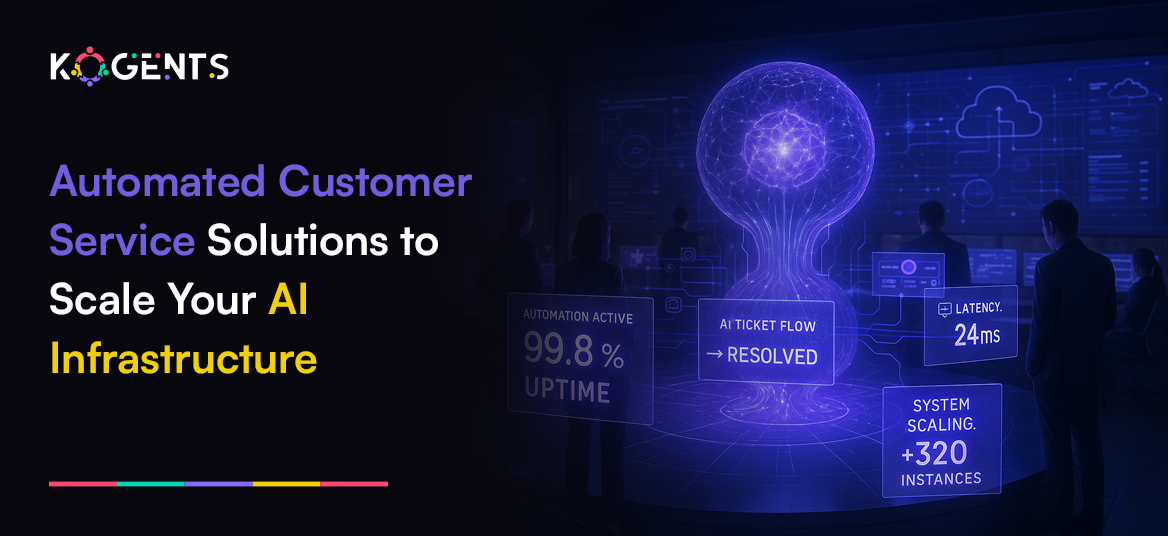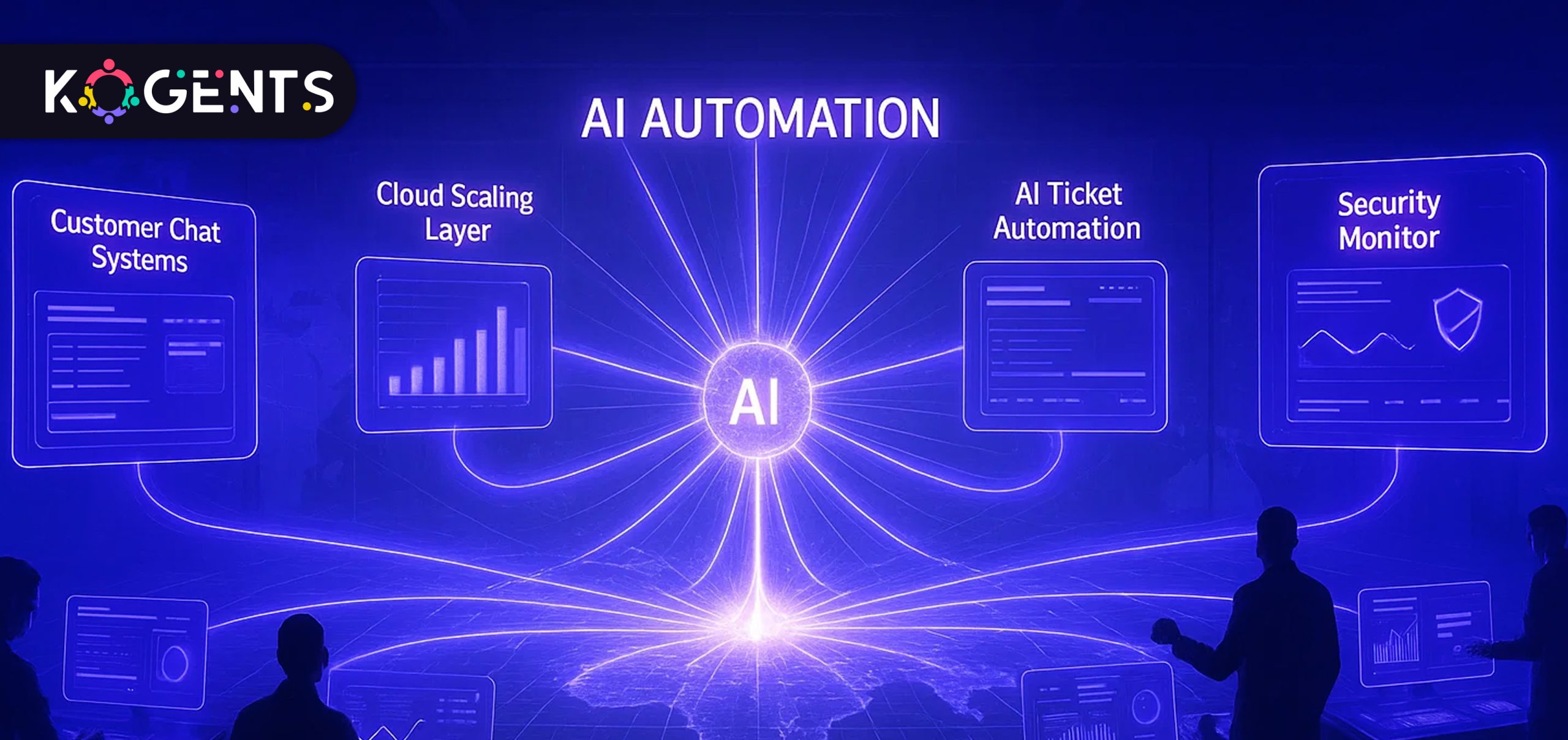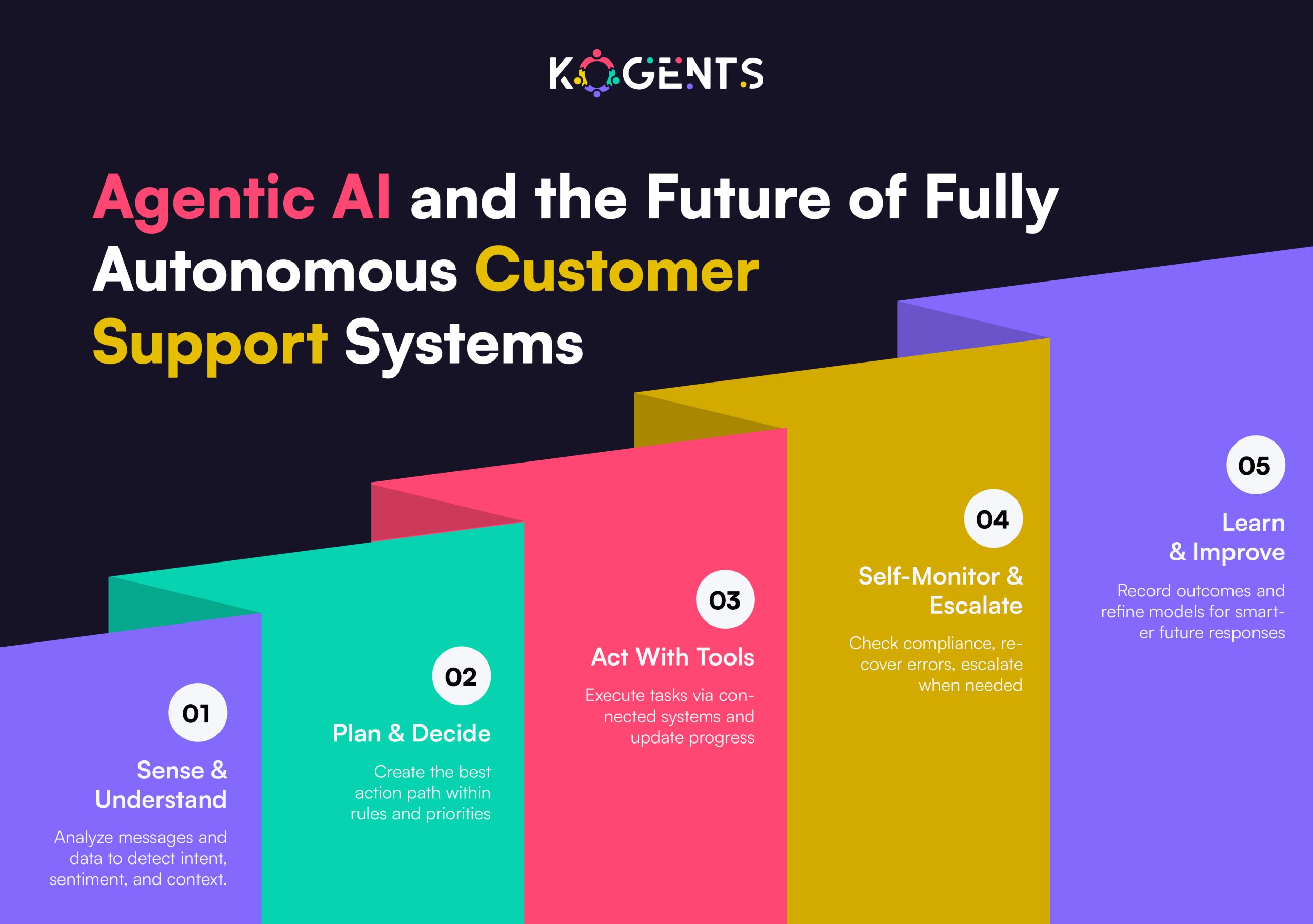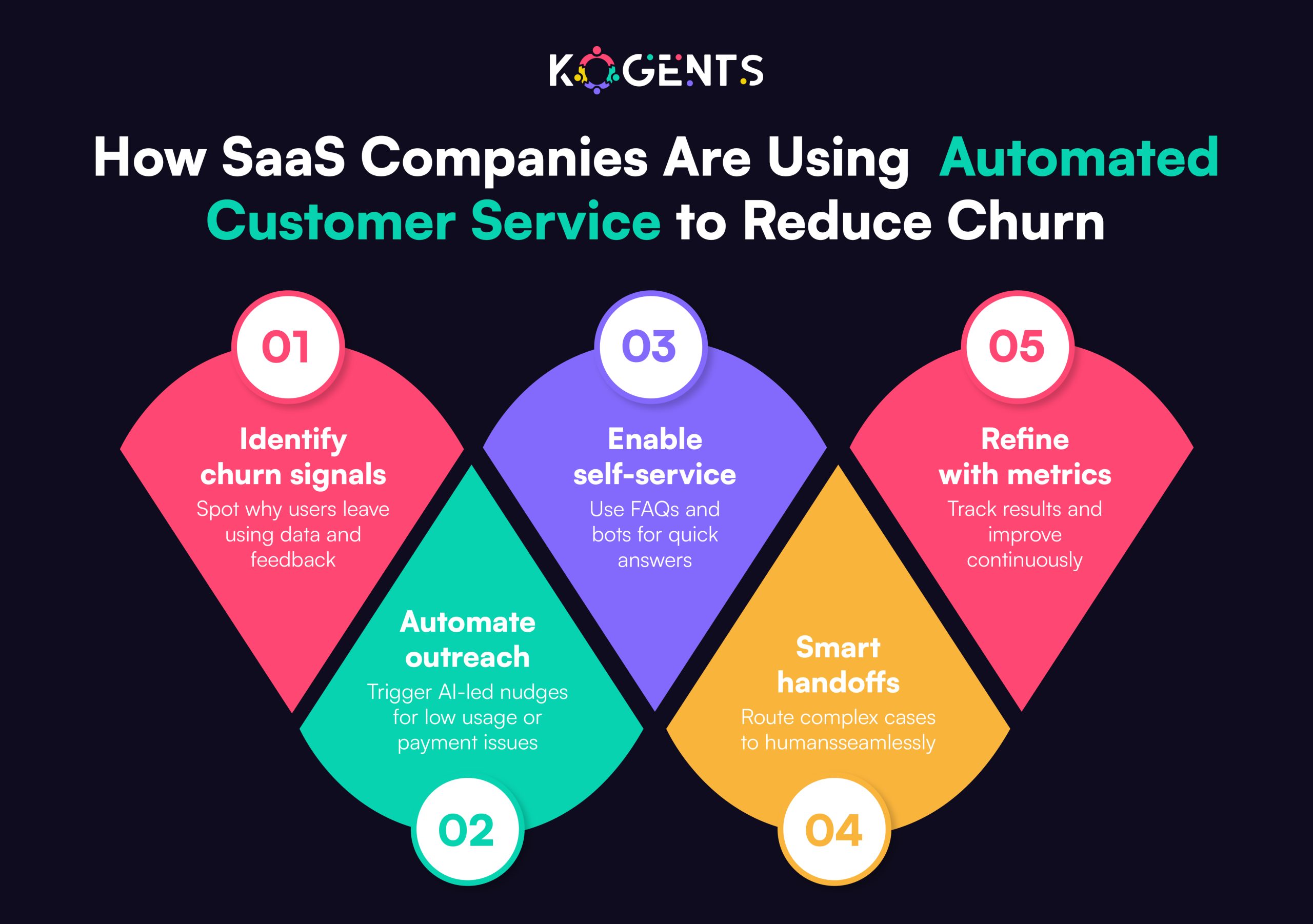Automated Customer Service Solutions to Scale Your AI Infrastructure

Summary:
Imagine you run a solo digital-services business, or a lean startup, and you’re scaling, not just in terms of revenue, but in customers, support tickets, inquiries, and expectations.
Now imagine the enquiries flooding in at odd hours, across chat, email, phone, and social DMs.
Without the right infrastructure, you’ll quickly drown in repetitive questions, your support quality will drop, your customer-effort score will soar, and your growth will stall.
That’s where automated customer service systems come in.
They let you respond 24/7, reduce average response times, triage queries intelligently, deploy chatbots and AI virtual assistants for businesses, automate knowledge-base interactions, and free you to focus on growth and high-value work.
For a solopreneur/entrepreneur, that’s a game-changer.
This blog is designed to help you architect your support automation infrastructure with clarity, depth, and context so that you can scale confidently.
Key Takeaways
Before we dive into the meat of the article, here are five core insights to carry forward:
- Scalability first: Automated solutions allow even small teams to handle large volumes of inquiries without linear cost increases.
- Customer experience (CX) enhancement is not sacrificed for automation; when done right, you can improve first-contact resolution (FCR) and reduce customer effort.
- Omnichannel and workflow automation are essential: leveraging chatbots, voice bots, IVR automation, ticket-routing, and self-service portals in concert.
- Human‐agent augmentation remains critical: complementing automated systems with knowledgeable live agents adds trust and handles complexity.
- Metrics matter: to demonstrate ROI, you must measure things like cost-reduction in customer service, automated resolution rate (ARR), CSAT, CES, and agent productivity.

What Are Automated Customer Service Solutions?
Automated customer service solutions combine artificial intelligence (AI), machine learning (ML), and workflow automation to streamline customer interactions.
These tools handle repetitive inquiries, reduce response times, and free human agents, or founders themselves, to focus on high-value tasks.
Core Components:
- Chatbots & Virtual Assistants: conversational AI for customer service tools that resolve common issues, guide self-service, and route complex requests.
- Knowledge Base & Self-Service Portals: Interactive FAQs and wizards that let customers solve problems independently.
- Voice & IVR Automation: Voice bots handle phone-based support with natural language processing (NLP).
- Workflow Automation: Automatically categorize and prioritize tickets, triggering the right responses or hand-offs.
- Proactive Support: Predictive AI detects potential issues (like failed payments) and reaches out before they escalate.
Why Now? The Case for Automated Customer Service Solutions
1. Rising Expectations
- Customers now expect rapid, personalized support on every channel, at any time.
- Studies show nearly nine out of ten consumers will switch brands after a single poor experience.
- Automation ensures responsiveness and consistency even when your team is small.
2. Operational Efficiency
AI automation reduces manual workload by handling repetitive tasks, freeing human capacity for high-complexity or emotionally sensitive cases.
3. Nonlinear Scalability
- Traditional scaling, hiring more agents, is expensive and slow.
- Automated solutions let you grow without expanding headcount, making your customer service infrastructure as scalable as your software stack.
4. From Reactive to Proactive
- Predictive analytics turns support into a forward-looking function.
- By analyzing behavior patterns and past tickets, AI can resolve issues before they occur, improving loyalty and reducing churn.
5. Competitive Edge
- Most small businesses still rely on manual service.
- Early adopters of automation build reputations for speed, precision, and reliability, gaining both trust and differentiation.
How Automation Intersects with AI Infrastructure?
Automation can’t function in isolation; it relies on a well-structured AI infrastructure underneath. Think of it as the “digital backbone” that connects your automation tools, data, and models into one cohesive system.
1. Data Pipelines & Integration
- At the core of scalable automation lies clean, connected data.
- Every chat, email, or call becomes structured input that trains machine-learning models.
- Robust data pipelines ensure that this information flows seamlessly from your CRM, support desk, and analytics tools into the AI layer.
2. Model Deployment & Orchestration
- When a chatbot answers a question or a virtual assistant routes a ticket, it’s powered by language models hosted on scalable cloud environments.
- Automated infrastructure enables continuous deployment, load balancing, and latency management so responses remain instant and reliable, even under surge conditions.
3. API and Microservice Architecture
- Automation solutions plug into APIs that connect systems like Salesforce, HubSpot, or Zendesk.
- A microservice-based infrastructure allows each component, chatbots, ticketing, and analytics, to evolve independently, reducing downtime and simplifying upgrades.
4. Continuous Learning & Feedback Loops
- Each interaction becomes training data.
- Feedback loops capture whether an AI response satisfied the customer or required escalation, allowing the model to improve over time.
- Over weeks and months, automation becomes smarter and more aligned with your brand voice.
- Infrastructure as a Multiplier
- In essence, automation scales as effectively as the infrastructure beneath it.
- Businesses that invest early in flexible, API-driven, cloud-native systems see exponential efficiency gains, because AI thrives on connectivity, not isolation.
Building the Right AI Infrastructure
Once your automation strategy is in place, the next step is strengthening the technical foundation that supports it. Here’s what to prioritize:
1. Cloud vs. On-Premise vs. Hybrid
- It offers speed and scalability without upfront hardware costs, ideal for small teams.
- Hybrid models, combining local control with cloud compute, suit businesses handling sensitive customer data.
2. Data Foundations
- Clean, labeled, and compliant data pipelines are essential.
- Data should be anonymized, encrypted, and organized by intent and category.
Note: Poor data leads directly to poor automation outcomes.
3. Model Lifecycle Management
Your automation tools rely on continuously trained models.
MLOps frameworks ensure smooth cycles of training, deployment, and monitoring, keeping your systems adaptive to real-world changes.
4. Observability & Monitoring
- Set up metrics dashboards for latency, ticket resolution rates, and user satisfaction.
- Monitor model drift to ensure the system doesn’t degrade over time.
5. Security & Compliance
- Choose vendors compliant with SOC 2, GDPR, or ISO 27001.
- Automation handles sensitive data; security should scale with functionality.
6. Practical Scaling for Solopreneurs
Use managed APIs and infrastructure from providers like AWS, OpenAI, or Google Cloud AI.
Learn It: They handle compute scaling, uptime, and data redundancy, so you focus on customer experience, not server maintenance.
Common Pitfalls & How to Avoid Them
Even with strong technology, implementation missteps can limit results. Avoid these traps:
- Over-automation: Don’t automate empathy. Keep human escalation for complex or emotional cases.
- Poor data hygiene: An outdated knowledge base or unclean data pipeline ruins customer trust.
- Siloed channels: Ensure chat, email, and phone systems share customer context.
- Ignoring analytics: Without measuring ARR, CSAT, and cost per interaction, you can’t scale intelligently.
- Neglecting training: As automation grows, train your human support to handle edge cases and reinforce the AI loop.
Trends on the Horizon: Unravel Now!
Here are four trends reshaping customer service for small businesses:
- Generative & Agentic AI – AI agents can now reason, personalize, and act across workflows, handling not just questions but entire processes.
- Predictive & Proactive Support – Systems will soon reach out before a customer even reports an issue.
- Human-AI Orchestration – Instead of replacing people, automation will coordinate them, assigning tasks dynamically based on skill and workload.
- Ethical & Transparent AI – Customers increasingly demand clarity about AI involvement and data use. Trust will be a defining competitive edge.

Case Studies: Real-World Evidence
Case Study 1: Enterprise-Scale Automation at IBM
In their “The Future of AI in Customer Service” report, IBM noted that mature AI adopters, organisations operating or optimising AI-powered customer service solutions, reported 17 % higher customer satisfaction.
IBM While this is enterprise scale, the principles apply to smaller businesses: deploying automation pays off in improved customer experience.
Case Study 2: Chatbot Automation Gains
Startups Leveraging Generative AI |

| Feature / Capability | Basic Self-Service Portal | Chatbot / Virtual Assistant | Full Omnichannel Automation Platform |
| Routine query resolution | Knowledge base + FAQ | Automated answers + hand-off | + predictive routing, ML, voice bots |
| Live agent escalation | Manual | Logical hand-off | Seamless human-agent integration |
| Multichannel support | Usually, one channel (web) | Chat + web | Chat, email, voice/IVR, social, mobile |
| Workflow automation | Very limited | Basic routing | Advanced routing, SLA automation, analytics |
| Human-agent augmentation | Minimal | Some suggestion features | Full AI assist: suggestion, auto-categorisation, analytics |
| Scalability | Moderate | Good | Excellent—designed for high volume |
| Suitability for a solopreneur | Good entry point | Strong for a small team | More suited when volume scales (but can be used modularly) |
| Typical investment | Low | Moderate | Higher—but many vendors offer modular/usage-based pricing |
Before You Leave!
For entrepreneurs and solopreneurs, deploying automated customer service solutions is not just about cost-cutting; it’s about enabling growth, freeing your time to focus on the core business, and delivering a superior customer experience (CX) even as volume and expectations ramp up.
By investing early in a lean, scalable self-service customer support automation infrastructure, one that leverages chatbots, a knowledge base, workflow automation, and seamless human hand-offs, you set yourself apart from competitors stuck in purely manual support.
Over time, you can layer in predictive customer service, voice bots, omnichannel automation, and analytics.
We’ve shown you the path, the technologies, the metrics, and the pitfalls; it’s now your decision to act.
With the right automated customer service platform and strategy, you can scale without sacrificing quality. So, partner up with Kogents.ai for the best AI agents for customer support now!
FAQs
What are automated customer service solutions?
These are software and systems (chatbots, virtual assistants, workflow automation, self-service portals) designed to automate customer service for. Businesses, enabling faster, 24/7 support, and reducing cost and manual intervention.
What are the benefits of automated customer support solutions for US businesses?
Benefits include faster response times, lower cost per interaction, improved first-contact resolution, higher customer satisfaction, better scalability, and enabling support teams to focus on higher-value tasks.
What trends are shaping the US customer service automation market in 2025?
Rising adoption of generative AI, voice bots, predictive support, omnichannel automation, and human-agent orchestration.
What are the differences between chatbots and human support in contact centres?
Chatbots handle high-volume, routine queries quickly and consistently; human agents handle complex, emotional, or high-impact issues requiring empathy and judgment. Optimal systems integrate both via escalation workflows.
What is the pricing for customer service automation platforms?
Pricing varies widely: simple chatbot tools for solopreneurs might cost a few dollars per month; enterprise platforms can run thousands per month. Many vendors offer usage-based or modular pricing to scale with you.
For a solopreneur, which automated customer care solutions USA are most suitable?
Focus on lightweight tools that integrate with your website/chat, automate your top three routine queries, provide a fallback to live support, and scale as your business grows. Prioritize cost-effectiveness and ease of setup.

Kogents AI builds intelligent agents for healthcare, education, and enterprises, delivering secure, scalable solutions that streamline workflows and boost efficiency.